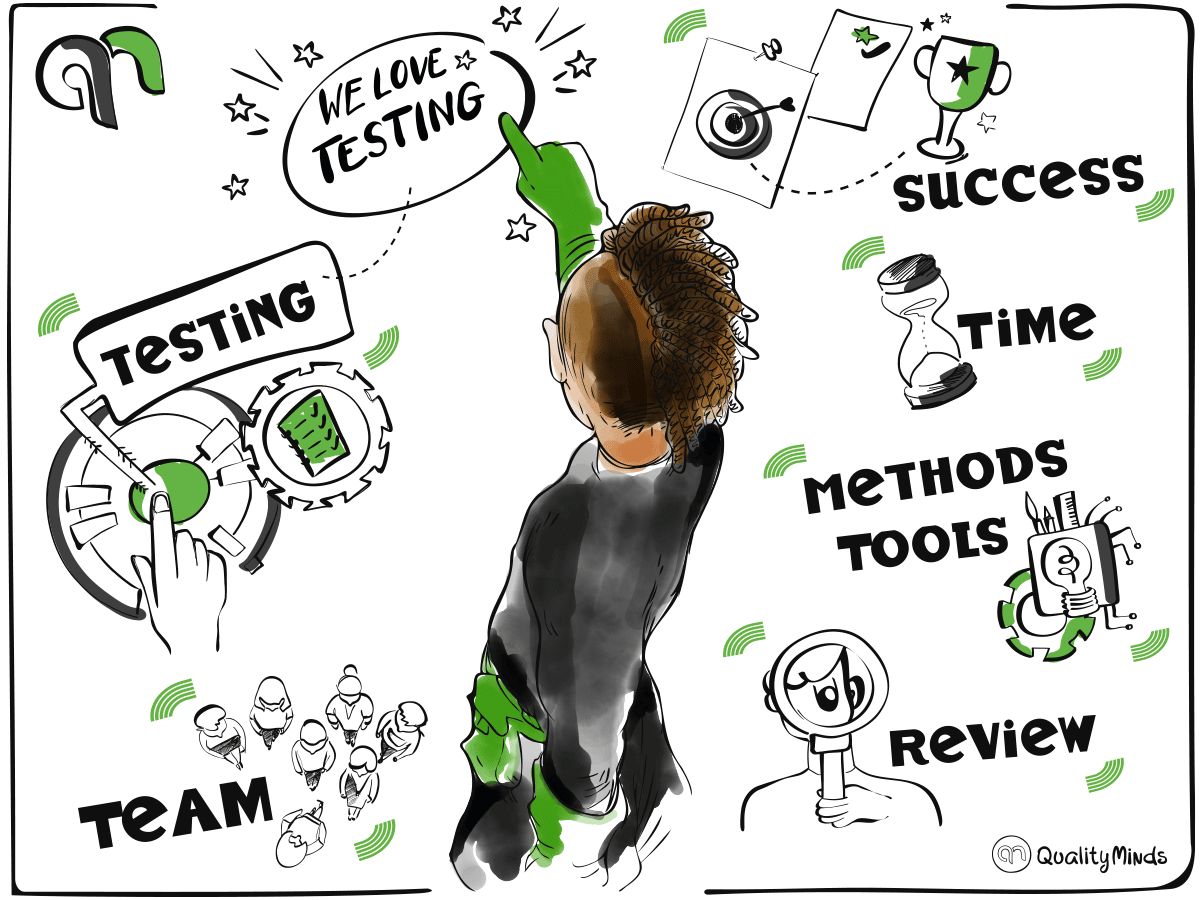As you may have already noticed, we have introduced a 2-week ‘Let’s Test Session’ in our testing team. Here we meet on a voluntary basis to present and try out well-known but also less known methods around testing.
Here is what happened in our newest Let’s Test Session: we took a closer look at a method for structuring exploratory testing, documenting it for other team members in the project, and thus making it more transparent.
Why this method?
In the consulting environment, we often hear skeptical voices claiming that exploratory testing is unstructured and that little, if anything, is documented. Since this is not true, we have examined a method that dispels this false idea. Let’s talk about session-based testing.
Within a fixed time frame of 45-90 minutes, a previously defined object, such as a scenario or a feature, is tested undisturbed and concentrated. We used various tools, for example a test charta, in which, among other things, the course, results and deviations found in the test session are noted.
What and how did we test
We chose a website from the e-commerce environment and each participant defined a goal for their session in advance. Different aspects were tested, such as:
- The newsletter signup and confirmation feature including validation of the (not) allowed characters entered;
- The UX in terms of intuitive navigation, e.g. when a user is looking for a specific category;
- The product search feature: are only matching items displayed as results? What happens if the desired product is not available in the store?
- The performance of the page, especially when switching back and forth between pages or loading images;
- The calculation of shipping costs, e.g. for several bulky or forwarding agent items.
For the practical test we took 45 minutes and afterwards, due to time constraints, we only presented and discussed the deviations we found.
In a regular project, we would of course have discussed the results as well as queries and deviations with the product owner and the developers and reported the bugs in an appropriate tool.
Conclusion
Session Based Testing can be used whenever you need quick feedback on an application. Since you actively deal with the product, you also develop a better understanding of it. Session Based Testing is also a creative addition to pre-written test cases for a feature.
It can also be useful to conduct the session as a pairing, e.g. with a developer. Or with a second tester: both participants test the same scenarios on different devices and then compare and discuss their observations.
Read more about the previous Let’s Test sessions here:
https://qualityminds.com/lets-test-risk-storming/
https://qualityminds.com/lets-test-testing-tours/
https://qualityminds.com/lets-test-the-vending-machine/
Do you have any questions? Email us! testing@qualityminds.de
About the Testing Team (Portfolio): https://qualityminds.com/services/testing-and-quality-assurance/functional-testing/


0 Comments